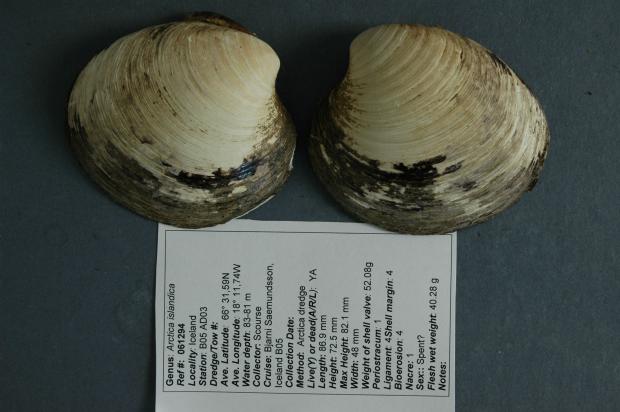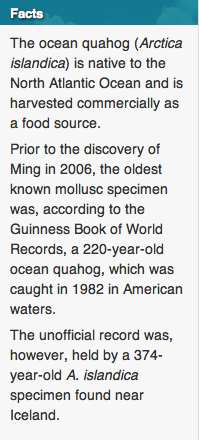 Source: Indian Country Today Media Network
Source: Indian Country Today Media Network
In a major scientific faux pas, scientists have discovered that they not only killed the world’s oldest creature, they also incorrectly dated it.
In 2006, when it was discovered in North Wales and opened by scientists, Ming the Mollusk was thought to have been 405 years old. Further study has revealed it to have actually been 507 years old at the time of its demise.
The discovery made it into the Guinness Book of World Records.
“We got it wrong the first time and maybe we were a bit hastingly publishing our findings back then. But we are absolutely certain that we’ve got the right age now,” ocean scientist Paul Butler, who researches into the Arctica islandica bivalve mollusk at Bangor University in Wales, told ScienceNordic.
That puts Ming’s date of birth sometime in 1499—just seven years after Christopher Columbus landed in the New World.
The British researchers who opened the creature up for scientific study were not aware of its impressive age at the time. Ming was so named after its death after the Chinese Mind dynasty, which was in power when the animal was born. The name is still relevant too, as the Ming dynasty lasted from 1368-1644.
Are the scientists sure they are right about Ming’s age this time around? ScienceNordic reports a general consensus that they are.
“The age has been confirmed with a variety of methods, including geochemical methods such as the carbon-14 method. So I am very confident that they have now determined the right age. If there is any error, it can only be one or two years,” marine biologist Rob Witbaard of the Royal Netherlands Institute for Sea Research, who has researched into the A. islandica for more than 30 years, told ScienceNordic.

Ocean quahogs can be dated by their growth rings—for each year of life, a new ring appears. During years when the animal consumes a lot of food, the ring is wider, as opposed to being narrower like in years when less food is consumed.
Those rings will also provide insight into climate changes during Ming’s lifetime, reports ScienceNordic.
“The fact alone that we got our hands on an animal that’s 507 years old is incredibly fascinating, but the really exciting thing is of course everything we can learn from studying the mollusc,” the head of the AMS 14C Dating Centre at Aarhus University, Denmark, Associate Professor Jan Heinemeier, who helped with the new dating of Ming, told ScienceNordic.
Scientists can determine the sea temperature by examining the various oxygen isotopes in Ming’s growth rings.
“The A. islandica provides us with a year-by-year timeline of the ocean temperature. I find that incredibly fascinating,” Butler told ScienceNordic.
Read more at http://indiancountrytodaymedianetwork.com/2013/11/19/worlds-oldest-animal-nearly-old-columbus-landing-152301
